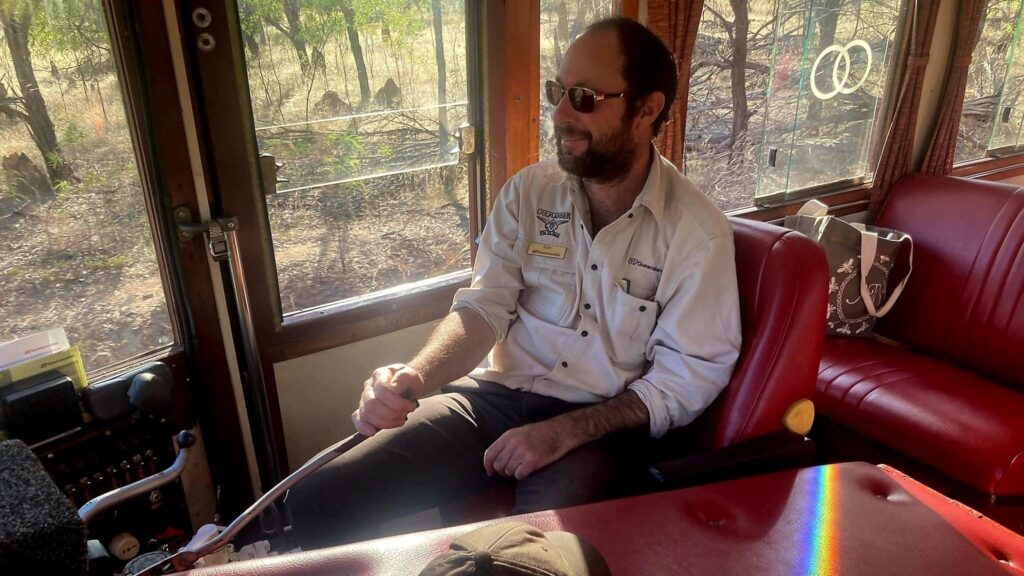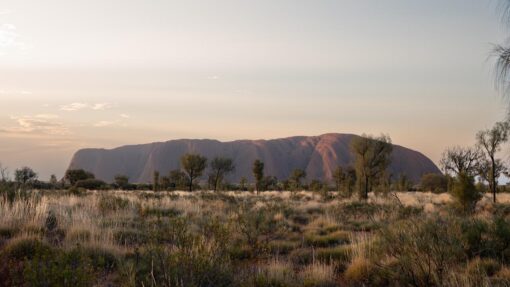Historic outback train service farewells driver after 14 years on the journey from nowhere to nowhere
Richard Dinnen - Queensland Editor |

Pic: Ken Fairbairn driving the Gulflander (Marc Warren)
Choosing which way to turn at a road intersection can be a life-changing decision. For Ken Fairbairn, the moment came at a Queensland Gulf country T-junction in 2008.
Ken was driving around Australia in a “rust bucket Troop Carrier” on his way from Burketown, not sure if he had time to turn left to Normanton.
“In the end, I thought I’ll turn left, because I’ve heard about this train. I want to go and have a look.”
That train is the historic Gulflander railmotor. Ken became its driver for the next 14 years.
“The Gulflander is different. It’s halfway between a bus and a train. It’s got gears and a clutch.
“There’s a lot more technique involved in changing the gears, taking into account the engine revs, speed, the load on the train. That takes a lot of getting used to.
“It’s 72 years old. The older trains, like the Gulflander, were purpose-built, bespoke. I like the look of them, the aesthetic.”
The Gulflander runs from Normanton, on the Gulf of Carpentaria, across 151 kilometres of stunning savannah country to Croydon, once the centre of a gold mining boom.
It opened in the 1880s, and still uses the original rail and steel sleepers, instead of the usual timber, which the notorious local termites would have quickly consumed.
The line is not connected to any other part of the Queensland Rail network, and the Gulflander is affectionately called the train “from nowhere to nowhere”.
But that sense of isolation, and the remote country it passes through, make the Gulflander a journey at the top of must-do lists for many Australians and international visitors.
The train proceeds at a gentle 40 kilometres per hour, a pace Ken says allows good viewing of the country and its abundant wildlife.
“There’s a lot of wildlife. You can never predict the goannas. They dig under the track.
It’s earth-packed line, there’s no ballast, and they can come out of nowhere. I usually manage to pull up in time for them.
“And there’s more of them. They seem to have worked out the cane toad situation. Toads nearly wiped them out, but goanna numbers are increasing. That’s good.”
After 14 years in the Gulf country, Ken and his family drove out of Normanton a few days ago, heading for a new rail adventure in Tasmania.
“I’m going to Queenstown to drive on the West Coast Wilderness Railway that goes to Strahan and Macquarie Harbour.
“It’s bittersweet leaving. I’m only going because a good opportunity came up. It was very, very difficult to drive out of town the other day.
“Normanton is not as structured as bigger centres, and I enjoyed that. Things are a lot more flexible, being able to disappear into the scrub whenever you wanted. I really enjoyed that.”
Queensland Rail farewelled Ken on the Gulflander Facebook page, saying he’d lived, worked, and breathed all things Gulflander and will be missed.




